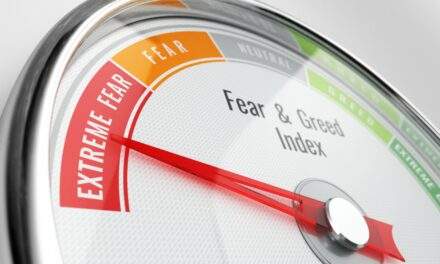I’ve studied the market for years, testing dozens of indicators. But I’ve never seen anything like the Greed Gauge.
The Greed Gauge is Mike Carr’s market timing tool. It measures emotions, offering unique insight into how traders feel about the market.
Market analysis should be an intellectual activity. But with money on the line, traders allow emotions to get in the way. The Greed Gauge recognizes that and quantifies the two main emotions driving the market — greed and fear.
This is the kind of information that gives us a real edge in trading, and today, I’ll show you how…
Breaking the Mold in Trend Analysis
The Greed Gauge allows us to see the market in a new, groundbreaking way.
Other indicators are based on the standard story of how markets work. In any market, prices are determined by supply and demand. These simple concepts that we learned in economics classes are used to explain why prices move in trends.
When supply exceeds demand, prices fall. The opposite is also true. If demand exceeds supply, prices rise.
The housing market is a good example. During the pandemic, people wanted to leave apartments in cities. They wanted bigger homes in less crowded areas. Supply of apartments and homes changed slowly. The level of demand drove changes in prices.
As demand fell, apartment rents dropped. Rising demand pushed home prices up.
While economists used supply and demand curves to understand the trends, I knew about the Greed Gauge, and it allowed me to perceive something else.
I could see emotions driving the trends. Yes, supply exceeded demand for apartments. But the cause of that was fear. Emotions drove decisions in the pandemic. Many people wanted out of crowded cities.
Larger homes were a more comfortable place to quarantine. Potential buyers made emotional decisions because they wanted to be comfortable if the economy were to shut down again.
Many pictured themselves watching sunsets on the patio during future lockdowns rather than sitting on the only couch in a one-bedroom apartment. Buyers’ emotions drove prices up.The Greed Gauge tracked these emotions. The chart below of the SPDR S&P Homebuilders ETF (NYSE: XHB) shows how.

(Click here to view larger image.)
At the bottom you see the Greed Gauge. It turned red, meaning fear was rising, before the bear market began. The buy signal came just days after the market bottom as greed (marked by green) replaced fear in the market.The Greed Gauge taught me to visualize fear and greed. That’s really what drives price trends. It’s a better way to look at the market compared to the standard approach I learned years ago.
Emotions Fuel Market Tops and Bottoms
Old traders say things like “markets top when we run out of buyers.” Or “prices bottom when we run out of sellers.” These are simple statements. They describe how trends end. But every trade involves a buyer and a seller. Technically, we never run out of buyers or sellers.
That’s where the Greed Gauge comes in.
Since buyers equal sellers, markets don’t really bottom when we run out of sellers. Bottoms form when buyers act with greater urgency than sellers. The downtrend exists when sellers act with more urgency than buyers. Uptrends develop when the sense of urgency shifts, and traders can’t wait to buy.
That means the price of the trade is determined by which group of traders is more intent on trading. If the seller is more eager to trade, they’ll accept a lower price. If it’s the buyer, the price will move up.
This is based on how traders are feeling, and the Greed Gauge shows shifts in emotional intensity. It’s the only indicator I know of that can systematically calculate how emotional traders are in real time. And it’s taught me that understanding emotions is the key to benefiting from trends.
If you haven’t yet seen Mike’s presentation on the power of the Greed Gauge, you’ll want to click here and check it out.
No matter what kind of environment we’re trading, we know emotions will be running the show. And as short-term options traders, we can count on the Greed Gauge to signal the best times to jump in and out of the market.
Regards,
 Amber HestlaSenior Analyst, True Options Masters
Amber HestlaSenior Analyst, True Options Masters








